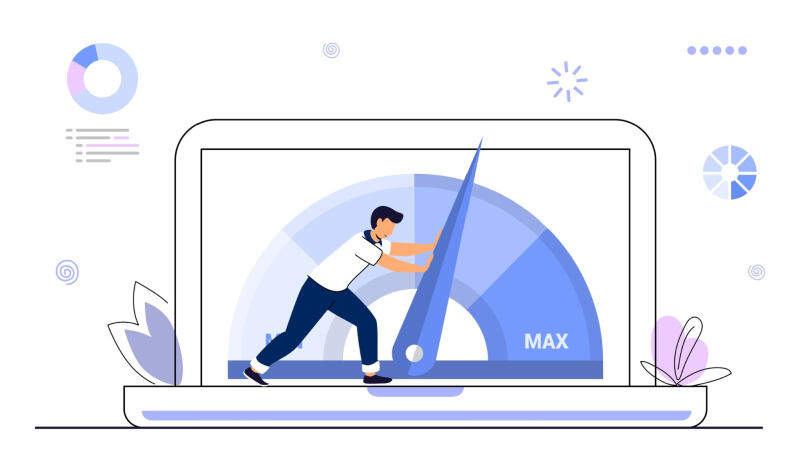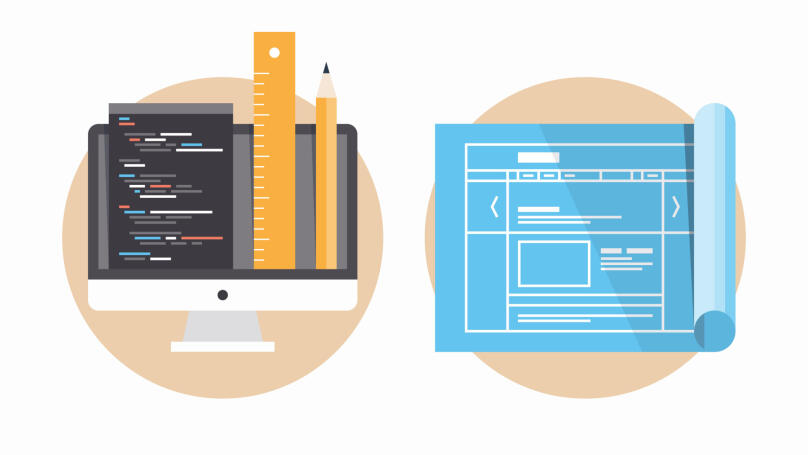Service Blueprint

What is a service blueprint?
A service blueprint illustrates the interactions between customers and the various service areas of a company. It represents a specific diagram that illustrates the process of providing services as well as communicating with potential consumers at all stages of their interactions with a brand.
A service blueprint is essential to accurately confirm which operations within the company need to be improved, how effective a particular service operates, and what can be revised or eliminated. Therefore, this visualisation tool enables you to examine in greater detail all the stages of interaction between customers and the company to establish the effectiveness of your service delivery methods, quality, and overall customer service. Furthermore, a service blueprint can illustrate information accurately, allowing you to intervene at just the right moment whilst working with customers and instantly improve their experience so that consumers purchase the company's products and regularly return to its services.
This model was initially introduced in 1984. Its author and creator was researcher G. Lynn Shostack, who published her research in the American popular science magazine "Harvard Business Review." Her model employed a more flexible approach to customer service, significantly simplifying many organisational aspects whilst considering consumers' needs and the company's business objectives.
Service blueprint vs customer journey map
Many professionals view the Service Blueprint as a customer journey map extension or the second part. To begin with, let us recall that a CJM is also an evident tool for capturing the customer's experience when interacting with the company. CJM stands for "customer journey map" and can consist of a table, diagram, chart or any other visually designed document. It includes customers' needs, desires, interests, emotions, and associations when interacting with the company's products.
Therefore, both CJM and service blueprint are tools for improving the customers' experience. However, they do have significant differences. For instance, a customer journey map focuses on the customers' experiences, feelings, and desires. It enables you to discover and improve the interaction between consumers and the company, including how easy and pleasant it is for them to engage in this type of communication and what emotions it evokes. Therefore, the sections of a CJM are linked to the customer, including communication channels and the consumer's emotional state and needs at each interaction stage.
A service blueprint, on the other hand, analyses organisational methods and customer service elements. It allows you to discover the effectiveness of different departments and how they interact with the customer to achieve the main business objective. A service blueprint focuses on the company's internal practices and identifies the most effective steps.
Therefore, a service blueprint focuses on operational procedures within the company, whilst a CJM focuses on customer experience.
Advantages of a service blueprint
Developing a Service Blueprint is a relatively labour-intensive process that will require a lot of time and effort. However, a well-designed blueprint will enable you to transform your customer relationships, eliminating all risks and concerns. A service blueprint will help a company improve its user experience and effectiveness whilst interacting with potential customers. Likewise, it will increase the quality of service and, as a result, increase sales, attracting new audiences and forming long-term relationships with your regular customers. Furthermore, this tool also improves internal organisational and production procedures, helping improve the psychological climate and uniting the work team.
Components of a service blueprint

The Service Blueprint must include the following sections:
- Customer actions
This summarises all the steps, actions, decisions, and choices customers make in their interactions with the company to achieve a certain goal. Interestingly, customer actions should be based on research from a customer journey map. In other words, every step of the customer is dictated by their needs, desires, interests, financial habits, and capabilities. To understand why a customer has made a particular choice, one should study their psychology by creating a CJM.
For example, customer actions could include visiting a website or an offline store, discussing a product with a sales advisor, buying or refusing to buy a product, arranging a delivery, interacting with a courier, writing a review, etc. These are all deemed significant.
- External actions
These are the procedures the customer can theoretically observe from the outside. For example, the interaction between two employees in a shop, communication between a sales assistant and another customer, greeting customers, responding to user reviews, communicating with partners, etc. Certainly, customer service managers and other professionals who engage in customer service must be as competent and professional as possible whilst being intelligent, friendly, and resourceful.
Advanced actions include self-service procedures, which could involve a customer accessing a website, mobile application, ATM, a special cash desk, and other tools. Therefore, when a customer interacts with these technologies, it should be easy and manageable for them and not raise unnecessary questions and doubts regarding using them correctly. After all, at these times, consumers decide whether to make future purchases or if they will return to your company's services.
- Behind-the-scenes action
This refers to the organisation's activities that are kept behind the scenes. Which consumers cannot see; they can only imagine what is happening outside their field of view. For example, the process of developing a new application or software, a dish prepared by a restaurant chef, designing clothes for a unique collection by a fashion brand, etc. There are numerous instances of these kinds of actions. They also include the activities of warehouse employees, delivery services, developers, marketers, etc. A service blueprint ensures that all work is productive and carried out competently.
- Support processes
There are also internal organisational methods, steps, and employee interactions that enable customer service to work and carry out the process of providing the service itself. This includes delivery of goods to the store, pricing, quality testing, etc.
- Physical evidence
This proves that an interaction between a company and the customer has occurred. In other words, they have bought the product, which could be a paid check or receipt to verify the purchase, etc.
Also, a service blueprint usually includes three key lines:
-
Line of interaction, which depicts close interactions between the customer and the company, for instance, discussing the value of a product with a sales consultant or the buying process.
-
Line of visibility separates the company's perceived and unseen actions from the consumer. Therefore, everything visible, including external actions, is above the line, and everything hidden behind the scenes is below it.
-
An internal communication line that separates employees who have direct contact with customers from those who do not interact with the customers.
Depending on the company's business aims and the details of its activities, you can also add to the Service Blueprint:
-
Time indicator. Tracking how long each action, operation, or process takes is vital. This will enable you to understand which steps should be implemented and improved.
-
Rules and regulations. This information determines what can be changed and what methods are based on strict principles and specified production standards. It is also vital to include safety regulations, information policies, work procedures, and the areas of responsibility for each employee.
-
Emotions. Just as CJM presents and analyses customers' feelings, with a service blueprint, you can explore the employees' emotions within their work and their direct communication with customers. This will help you identify any problem areas and improve consumer interaction and the team's general psychological environment.
-
Metrics or indicators identify the resources wasted due to operational inefficiency, why this occurs, and how to fix it.
Therefore, together with a well-designed service blueprint, various departments within the company can learn more about each other's work and the mutual impact of their activities on overall results. It also allows you to create a joint action plan to ensure you are running a smooth operation and a fantastic customer service procedure.
How do you create a service blueprint?

A service blueprint should not be a one-size-fits-all template or a design example. Your blueprint can be presented in several ways. The main objective is that it is easy for all employees to work with.
Stage 1. Defining the key goal
Determine what you want to achieve and what results and outcomes you anticipate from the service blueprint. Determining which product, service, or product line you will examine would be ideal. You need to realise that one blueprint cannot cover a company's activities, particularly if it specialises in producing multiple items simultaneously. Therefore, it is necessary to understand the process of selecting which particular service must be examined. For example, suppose you see a sharp decline in sales of a specific product. In that case, you should create a service blueprint and explore the methods associated with that product. You may encounter a problem at the production stage or face problems arising from the delivery service. There can be a lot of assumptions, including the predictable option of poor customer service.
Furthermore, it would be appropriate to determine the scope of the service blueprint, that is, the limits of the procedures you will examine. For example, if sales of a certain product have fallen over the past two weeks, pay particular attention to this period.
Stage 2. Establishing all points of contact with customers
Find out all the points of contact with customers, for example, in the process of choosing a product in an offline store or communicating with the seller in an online chat, consultation, direct purchases, arranging delivery and interacting with the courier, contacting support, and so on. This will be the foundation for your future visualisation.
Stage 3. Identifying key employee actions
Identifying the main stages or activities when providing a service is essential-highlighting the employees' actions and decisions, including developers and manufacturers, merchandisers, warehouse packers, couriers, sales consultants, etc. This also includes those activities carried out directly in customer interactions and within the organisation.
Stage 4. Determining the areas of responsibility and tasks of employees
In your emerging blueprint, indicating which employee is responsible for each activity already represented in the service blueprint is vital. Define responsibilities and evaluate the quality of their execution and the performance of planned objectives. Furthermore, describe how information flows and relates to work team members, employees, and customers.
Stage 5. General analysis and optimisation
Evaluate all processes during interactions, determine where they can be improved, which resources are used inappropriately, what stages in the communication process are lacking, and which can be safely eliminated. At the same time, it is necessary to identify issues and find opportunities for potential growth and development. As a service blueprint is a flexible and visual tool, it allows you to make the necessary changes, improve the customer's experience, and increase the efficiency of organisational processes immediately without stopping the work.
Examples of a service blueprint

Both large companies and startups can use a Service Blueprint. The main objective is understanding your goals, accurately portraying communication with customers and within the company, and drawing the right conclusions.
For example, Airbnb, a worldwide home rental platform, actively uses a service blueprint. It utilises this technology to gauge the convenience and ease of booking accommodation and simplify the process between renters and landlords. This enables them to refine procedures and improve service quality.
The Starbucks coffee chain also examines the service process using a service blueprint. The company looks at every action of its employees, from ordering coffee to providing coffee to its customers. Therefore, a service blueprint is employed to optimise the employees' performance.
The world's largest e-commerce platform, Amazon, uses a service blueprint to improve its delivery and follow-up customer service. It enables faster, more effective communications to boost sales.
Conclusion
Therefore, a service blueprint is a visual and convenient tool that can help you gain a comprehensive understanding of the company's target audience, enhance customer experience, boost loyalty, and address internal operational issues. It will also enable you to effectively communicate between departments, distribute areas of responsibility and improve the production processes. Additionally, it is a universal and flexible tool that allows you to quickly respond to changing market conditions whilst minimising all risks.























